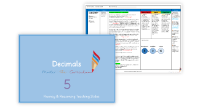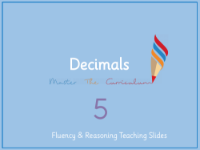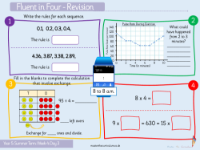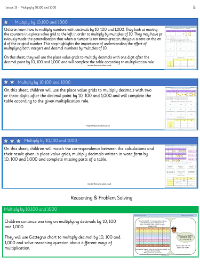Decimals - Multiply Decimals by 10, 100 and 1,000 - Planning
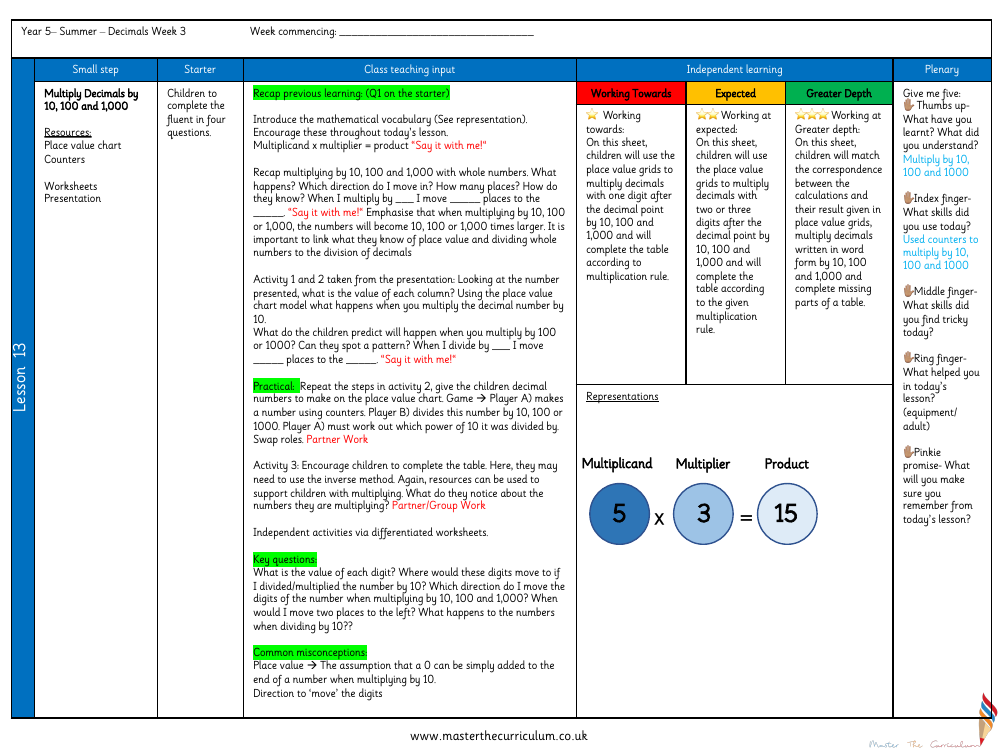
Maths Resource Description
In the third week of the summer term, Year 5 students embark on learning how to multiply decimals by 10, 100, and 1,000. The lesson begins with a review of previous learning and a quick 'fluent in four' questions to warm up. The class is then introduced to relevant mathematical vocabulary, such as multiplicand, multiplier, and product, and these terms are used throughout the lesson to familiarize students with the language of multiplication. The teaching input revisits the process of multiplying whole numbers by 10, 100, and 1,000, emphasizing the movement of digits in relation to place value and the significant increase in the numbers' size. Students are encouraged to draw on their understanding of place value when multiplying decimals, recognizing the patterns and shifts that occur within the number.
During the lesson, activities involve using a place value chart and counters to visualize the multiplication of decimal numbers by powers of ten. Students predict and explore the outcomes of these multiplications, identifying patterns and the shift of digits. A practical game further reinforces the concept, with students alternating roles in creating numbers and dividing them by 10, 100, or 1,000, then deducing the power of ten used. The lesson is structured to support a range of abilities: some children work on multiplying decimals with one digit after the decimal point, while others tackle more complex problems involving two or three digits, or even word-form decimals. Throughout the lesson, key questions prompt students to consider the value of digits and their movement during multiplication or division. The lesson concludes with a 'Give me five' reflection, where students consider what they have learned, the skills they've used and found challenging, and what they will remember from the lesson. This ensures a comprehensive understanding of multiplying decimals by powers of ten and the ability to apply this knowledge confidently.

